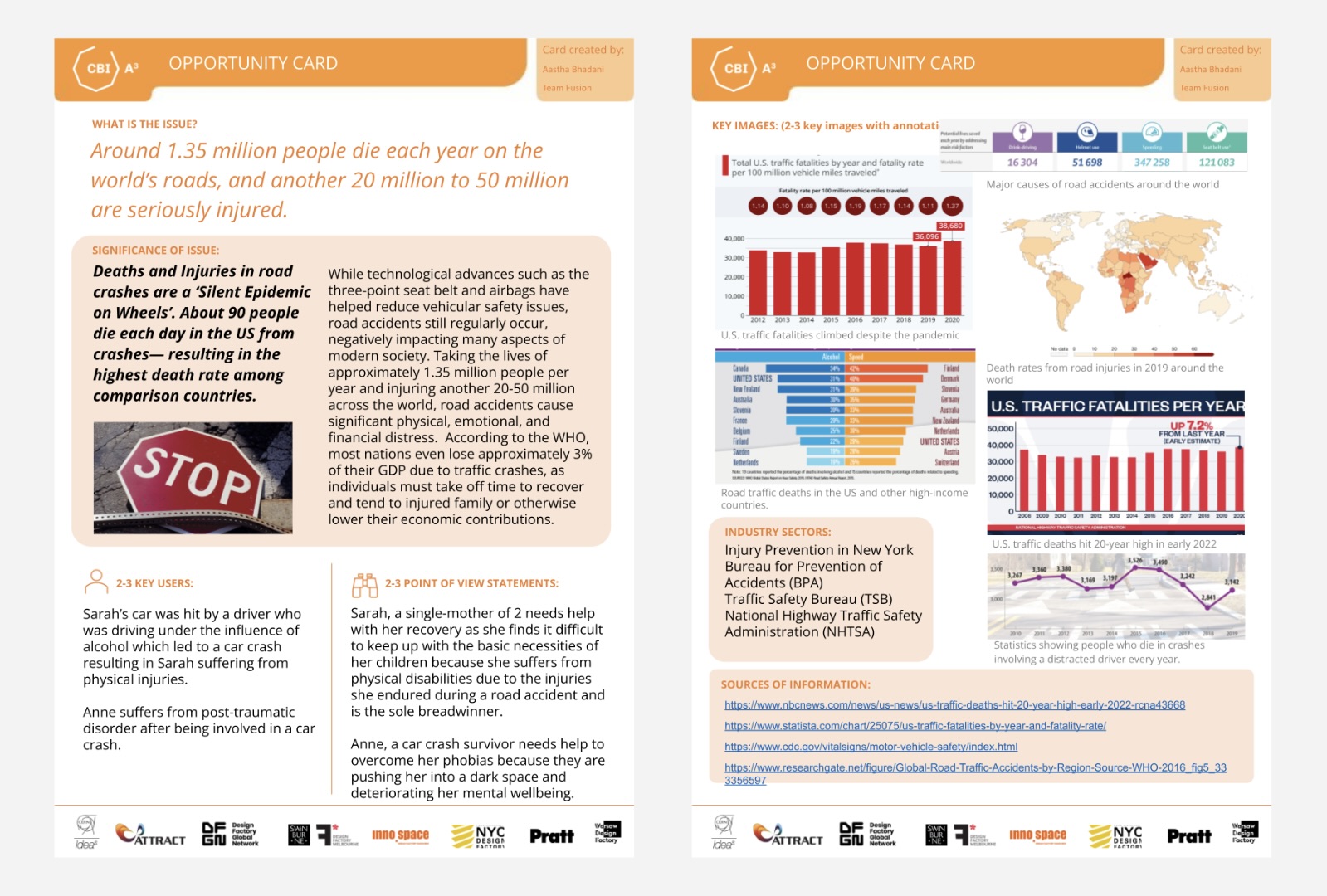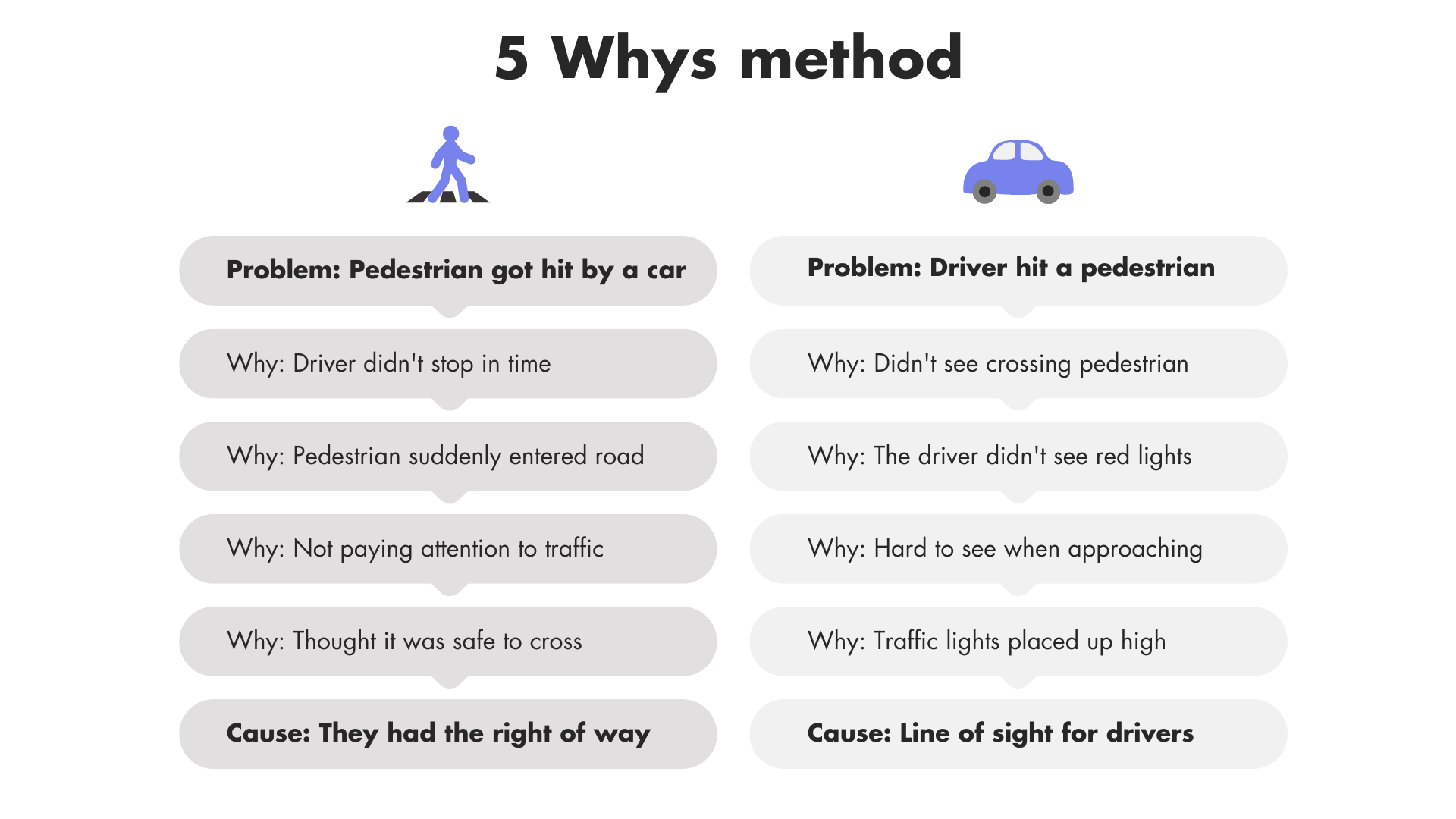Quote of the Week:
“Brace yourselves for a research odyssey”
After the unforgettable trip to CERN IdeaSquare, adjusting back to the NY East Coast time zone required a few extra days as our minds were still blown away by the eye-opening knowledge we had gained during the visit. We returned home, still reflecting on some of the profound questions that arose during the immersive two weeks; Why are we (humans) here (on the planet)? How can we create better societies through design? What is inside a factory where antimatter is researched?! Although the answers to these questions may remain obscure for the time being, our designers’ toolkits now contained plenty of new ideation tools and methods we had adopted, which were waiting to be used for our own project. In this project phase, we focused on refining the problem area through research, creating a preliminary idea for a solution space, and preparing a comprehensive presentation of our achievements so far, marking the end of the first phase of the CBI A3 program.
Refining the Problem Area
Bouncing back and forth with numerous opportunity cards we had created from different problem areas, the team agreed on the opportunity to improve the safety of New York streets by reducing traffic accidents and fatalities. Our decision was in line with the UN Sustainable Development Goals (UN SDGs) sub-goal 3.6, which aims to halve the number of people killed and injured in road traffic accidents worldwide by 2030. Conducting a preliminary investigation of the challenge highlighted the importance of this topic due to the alarming statistics describing the severity of traffic injuries and deaths in New York City. In 2022 alone, approximately 300 people died and over 50,000 were injured in traffic accidents in NYC (Vision Zero View, 2022). Such horrendous data only strengthened our determination to take on the challenge and envision a future where the busiest streets of Manhattan, and the other four boroughs, could be safely navigated without the fear of today’s chaotic traffic.

An Opportunity Card was created to have an idea of the problem, road traffic injuries and deaths.
Research Exploration
With a goal in our mind, that New Yorkers could safely walk the streets without the fear of traffic hazards, our research began by investigating the underlying causes of these serious accidents. Secondary research indicated that both the city’s residents and the authorities had woken up to the seriousness of traffic conditions in the area. A lot of research has been done on the topic worldwide, which we used as a base for our own research, and also looked at projects the city of New York and its residents had initiated. Having loads of data and information available helped keep us occupied during the cold and dark January days (and occasionally nights) as we delved into extensive research. The most well-known and largest project led by the city of New York, the Vision Zero [1] initiative, provided the best and most up-to-date insights for our team, e.g. that accidents mostly happen during rush hour in the afternoons and evenings, when visibility deteriorates due to darkness.
In addition to the thorough investigation of previous and existing research findings, we applied an iterative interrogative technique known as the Five Whys method to explore the cause-and-effect relationships of the underlying problem. By employing this method, we could explore various scenarios and perspectives concerning traffic accidents, such as pedestrian-vehicle collisions and vice versa, vehicular collisions with pedestrians. Through iterative questioning of “why” certain things can occur at each stage of these scenarios, we successfully identified underlying factors that potentially contribute to such accidents. The process allowed us to identify key factors contributing to traffic accidents and we could now propose that human decision-making and lack of situational awareness (perception of the elements in the environment [2]) both play a role in many crashes. Recognizing that pedestrians were often the victims, we formulated our problem statement to address the issue from multiple angles: How might we improve safety at NYC intersections for pedestrians, enabling them to make better decisions through real-time information?

The Five Whys method done from a pedestrian and from a driver’s point of view.
A Glimpse Into the Future
Based on the insights gained in the secondary research, we began to envision a possible future landscape for 2030 and beyond. Inspired by ARUP’s future scenarios [3], our vision was built on green tech becoming mandatory, highly sensored infrastructure, and autonomous traffic taking over the roads. The vision also comprised of tighter climate regulations which would lead to restricted civil liberties, while simultaneously leading to increased green vegetation and parkland areas in cities. Nonetheless, during this phase of the project, our primary focus was on refining the problem area and outlining the initial iteration of our design solution. Thereby, a broader definition of the future vision would again become relevant in the later stages of the project.
Initial Solution Idea
Based on the extensive research information, we embarked on the ideation process to craft our initial solution and later share it with the CBI A3 teams from other collaborating institutions. Furthermore, we had an opportunity to meet fellow teams, such as team Palu.Disa from InnoSpace, Germany, and team Ctrl Z from Melbourn Design Factory, Australia, in a virtual setting to exchange progress updates on our respective projects. Following the buddy team meeting, our team continued to refine our solution space to prepare for the phase 1 presentation.
The ideation process for traffic safety had initially started during the trip to IdeaSquare in Geneva, and consequently, we could continue to generate ideas within the same domain. Our team meetings often started with icebreakers and warm-up exercises, which would stimulate and prepare our minds for the intensive brainstorming sessions to come. As usual, we employed Post-it notes and whiteboard markers to capture the flood of ideas and added content to the mood board in Miro. Each novel idea was a gateway to the next one, finally culminating to the idea of “Traffdar,” a smart traffic mirror. Traffdar would allow sharing traffic alerts to drivers and pedestrians through its integrated sensors capable of detecting surrounding movement. The idea of drivers being confident of the absence of pedestrians in the way when turning right felt compelling, even though it didn’t yet fully align with our problem statement. Nevertheless, we now had an idea that showed transformative potential in shaping the infrastructure around us, which was the purpose of the CBI A3 program.

How the solution space was initially born at IdeaSquare and further developed into a smart traffic mirror after the trip.
References:
- Vision Zero View, 2022: https://vzv.nyc/
- American Psychological Association: https://dictionary.apa.org/situation-awareness
- Arup 2050 Scenarios: https://www.arup.com/perspectives/publications/research/section/2050-scenarios-four-plausible-futures

Recent Comments